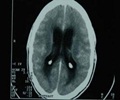Hopkins University team of researchers report their bioengineers have designed nanoparticles that can safely deliver drugs to the brain to treat brain cancer and other maladies affecting the brain.

"We are pleased to have found a way to prevent drug-embedded particles from sticking to their surroundings so that they can spread once they are in the brain," says Justin Hanes, Ph.D., Lewis J. Ort Professor of Ophthalmology, with secondary appointments in chemical and biomolecular engineering, biomedical engineering, oncology, neurological surgery and environmental health sciences, and director of the Johns Hopkins Center for Nanomedicine.
After surgery to remove a brain tumor, standard treatment protocols include the application of chemotherapy directly to the surgical site to kill any cells left behind that could not be surgically removed. To date, this method of preventing tumor recurrence is only moderately successful, in part, because it is hard to administer a dose of chemotherapy high enough to sufficiently penetrate the tissue to be effective and low enough to be safe for the patient and healthy tissue.
To overcome this dosage challenge, engineers designed nanoparticles – about one-thousandth the diameter of a human hair – that deliver the drug in small, steady quantities over a period of time. Conventional drug-delivery nanoparticles are made by entrapping drug molecules together with microscopic, string-like molecules in a tight ball, which slowly breaks down when it comes in contact with water. According to Charles Eberhart, M.D., a Johns Hopkins pathologist and contributor to this work, these nanoparticles historically have not worked very well because they stick to cells at the application site and tend to not migrate deeper into the tissue.
Elizabeth Nance, a graduate student in chemical and biomolecular engineering at Hopkins, and Hopkins neurosurgeon Graeme Woodworth, M.D., suspected that drug penetration might be improved if drug-delivery nanoparticles interacted minimally with their surroundings. Nance first coated nano-sized plastic beads of various sizes with a clinically tested molecule called PEG, or poly(ethylene glycol), that had been shown by others to protect nanoparticles from the body's defense mechanisms. The team reasoned that a dense layer of PEG might also make the beads more slippery.
Advertisement












